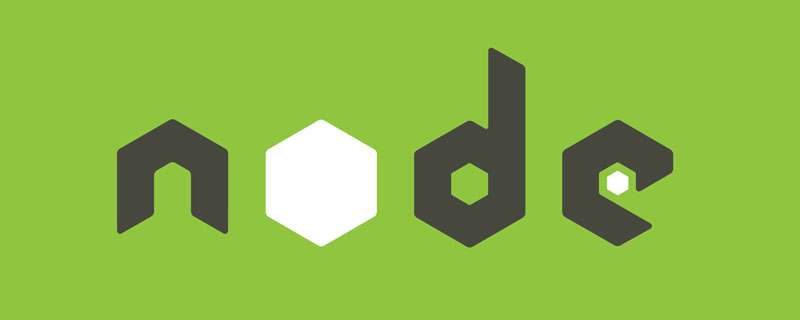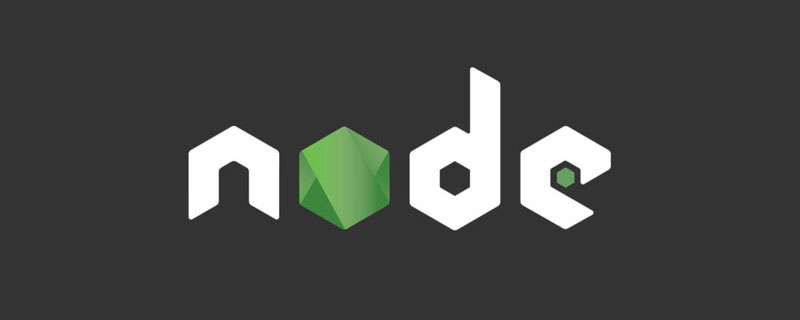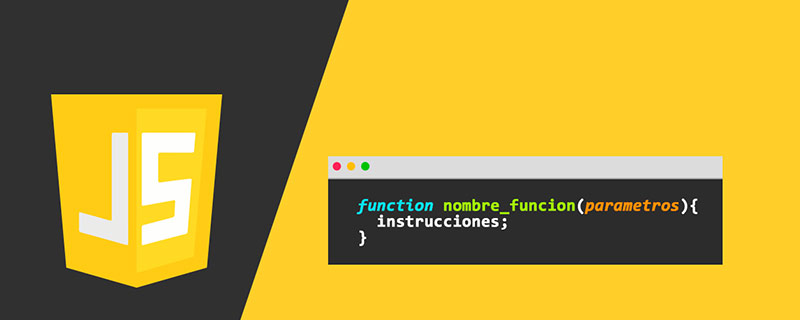怎麼使用NodeJS建立HTTP伺服器?以下這篇文章跟大家介紹一下使用Node建立一個簡單的HTTP伺服器的方法,希望對大家有幫助!

1. 使用Node.js直接執行JavaScript腳本
node.js基於Chrome的v8引擎運行js程式碼,因此我們可以擺脫瀏覽器環境,直接在控制台中執行js程式碼,例如下面這個hello world程式碼
console.log('hello world');
控制台中直接使用node即可運行

##2. 建立一個簡單的HTTP伺服器
node.js的內建模組http提供了基本的http服務的能力,基於CommonJS規範,我們可以使用require導入http模組來使用http模組中有一個createServer函數能夠讓我們建立一個http伺服器
其接收一個回呼函數作為參數,這個回呼函數接收兩個參數-- request和response
- request
包括所有客戶端請求的訊息,例如url、請求頭header、請求方式和請求體等 - response
主要用於傳回訊息給客戶端,封裝了一些操作響應體相關的操作,例如response.writeHead方法就可以讓我們自訂返回體的頭部資訊和狀態碼
response.end()方法就可以將回應體傳送給客戶端
使用createServer函數只是幫我們建立了一個Server對象,並沒有讓其開啟監聽,我們還需要呼叫server對象的listen方法才可以進行監聽,真正作為一個伺服器開始運行
- listen
方法的第一個參數是監聽的連接埠號,第二個參數則是綁定的主機ip,第三個參數是一個回呼函數,會被http模組非同步調用,當遇到錯誤的時候,就能夠在這個回呼函數的第一個參數中取得到拋出的異常,我們可以選擇對異常進行處理,讓我們的伺服器更加健壯
http模組建立一個簡單伺服器的範例
const { createServer } = require('http');
const HOST = 'localhost';
const PORT = '8080';
const server = createServer((req, resp) => {
// the first param is status code it returns
// and the second param is response header info
resp.writeHead(200, { 'Content-Type': 'text/plain' });
console.log('server is working...');
// call end method to tell server that the request has been fulfilled
resp.end('hello nodejs http server');
});
server.listen(PORT, HOST, (error) => {
if (error) {
console.log('Something wrong: ', error);
return;
}
console.log(`server is listening on http://${HOST}:${PORT} ...`);
});可以直接嘗試用node運行它,創造一個屬於你的伺服器!伺服器執行後,瀏覽器造訪http://localhost:8080即可存取到這個伺服器

nodemon運行它,這樣當我們的程式碼改變的時候就不需要手動終止程式再重新運行了
npm i -g nodemon建議全域安裝它,這樣就可以直接使用,不需要透過
npx nodemon去使用
使用也很簡單,直接將node指令改成nodemon指令即可
nodemon http-server.js

3 . 加上類型提示
前面我們在使用createServer以及resp物件的時候,看不到任何的語法提示,必須隨時跟著node官方文件去邊用邊查,有點不方便
但沒關係,我們可以使用ts的.d.ts檔案來幫助我們提供語法提示功能,注意,我們不是使用ts進行開發,只是使用它的語法提示功能而已
- 初始化項目--
- npm init -y
- @types/node
# --pnpm i @types/node -D 在專案目錄下建立 - jsconfig.json
文件,將node_modules排除在外,沒必要對其進行檢查
{ "compilerOptions": {
"checkJs": true
},
"exclude": ["node_modules", "**/node_modules/*"]
}
checkJs能夠幫助我們檢查類型錯誤問題,可以根據需要選擇是否開啟
可以看到,開啟檢查後立刻就給我們提示了參數類型不匹配的問題

listen方法上,就能夠看到該方法的簽章

可以看到,原来port参数需要是number类型,但是我们定义的时候是string类型,所以没匹配上,将其修改为number的8080即可
而且可以直接查看到相关api的文档,不需要打开node官方的文档找半天去查看了
4. 返回多个字符串的响应体
前面我们的简单http server中只返回了一句话,那么是否能够返回多句话呢?
这就要用到resp对象的write方法了,end只能够返回一次内容,而是用write方法,我们可以多次写入内容到响应体中,最后只用调用一次end,并且不传递任何参数,只让他完成发送响应体的功能
const { createServer } = require("http");
const HOST = "localhost";
const PORT = 8080;
const server = createServer((req, resp) => {
resp.writeHead(200, { "Content-Type": "text/plain" });
console.log("server is working...");
// write some lorem sentences
resp.write("Lorem ipsum dolor sit amet consectetur adipisicing elit.\n");
resp.write("Omnis eligendi aperiam delectus?\n");
resp.write("Aut, quam quo!\n");
resp.end();
});
server.listen(PORT, HOST, (error) => {
if (error) {
console.log("Something wrong: ", error);
return;
}
console.log(`server is listening on http://${HOST}:${PORT} ...`);
});
这次我们写入了三句话,现在的效果就变成这样啦

5. 返回html
我们不仅可以返回字符串给浏览器,还可以直接读取html文件的内容并将其作为结果返回给浏览器
这就需要用到另一个Node.js的内置模块 -- fs,该模块提供了文件操作的功能
使用fs.readFile可以异步进行读取文件的操作,但是它不会返回promise对象,因此我们需要传入回调去处理读取到文件后的操作
还可以使用fs.readFileSync进行同步阻塞读取文件,这里我们选择异步读取
const { createServer } = require("http");
const fs = require("fs");
const HOST = "localhost";
const PORT = 8080;const server = createServer((req, resp) => {
// change the MIME type from text/plain to text/html
resp.writeHead(200, { "Content-Type": "text/html" });
// read the html file content
fs.readFile("index.html", (err, data) => {
if (err) {
console.error(
"an error occurred while reading the html file content: ",
err
); throw err;
}
console.log("operation success!");
resp.write(data);
resp.end();
});
});
server.listen(PORT, HOST, (error) => {
if (error) {
console.log("Something wrong: ", error);
return;
}
console.log(`server is listening on http://${HOST}:${PORT} ...`);
});
现在的结果就像下面这样:

成功将html返回注意:这里需要将响应头的**Content-Type**改为**text/html**,告知浏览器我们返回的是**html**文件的内容,如果仍然以**text/plain**返回的话,浏览器不会对返回的内容进行解析,即便它是符合**html**语法的也不会解析,就像下面这样:

6. 返回JSON
当我们需要编写一个后端服务器,只负责返回接口数据的时候,就需要返回json格式的内容了,相信聪明的你也知道该怎么处理了:
- 将
MIME类型设置为application/json -
resp.write的时候传入的是json字符串,可以使用JSON.stringify处理对象后返回
const { createServer } = require("http");
const HOST = "localhost";
const PORT = 8080;
const server = createServer((req, resp) => {
// change the MIME type to application/json
resp.writeHead(200, { "Content-Type": "application/json" });
// create a json data by using an object
const jsonDataObj = {
code: 0,
message: "success",
data: {
name: "plasticine",
age: 20,
hobby: "coding",
},
};
resp.write(JSON.stringify(jsonDataObj));
resp.end();
});
server.listen(PORT, HOST, (error) => {
if (error) {
console.log("Something wrong: ", error);
return;
}
console.log(`server is listening on http://${HOST}:${PORT} ...`);
});
结果如下:

7. 返回pdf文件
和之前返回html文件的思路类似,都是一个设置响应头MIME类型,读取文件,返回文件内容的过程
但是这次我们搞点不一样的
我们的思路是在服务器运行的时候生成一个pdf文件,并将它返回
还需要将MIME的类型改为application/pdf生成pdf文件需要用到一个库 -- pdfkit
pnpm i pdfkit
首先我们编写一个创建pdf文件的函数,因为创建pdf文件还需要进行一些写入操作,不确定什么时候会完成,但是我们的请求必须等到pdf文件创建完成后才能得到响应
所以我们需要将它变成异步进行的,返回一个promise
/**
* @description 创建 pdf 文件
*/const createPdf = () => {
return new Promise((resolve, reject) => {
if (!fs.existsSync("example.pdf")) {
// create a PDFDocument object
const doc = new PDFDocument();
// create write stream by piping the pdf content.
doc.pipe(fs.createWriteStream("example.pdf"));
// add some contents to pdf document
doc.fontSize(16).text("Hello PDF", 100, 100);
// complete the operation of generating PDF file.
doc.end();
}
resolve("success");
});
};
这里使用到了管道操作,将PDFDocument对象的内容通过管道传到新创建的写入流中,当完成操作后我们就通过resovle告知外界已经创建好pdf文件了
然后在服务端代码中调用
const server = createServer(async (req, resp) => {
// change the MIME type to application/pdf
resp.writeHead(200, { "Content-Type": "application/pdf" });
// create pdf file
await createPdf();
// read created pdf file
fs.readFile("example.pdf", (err, data) => {
if (err) {
console.error(
"an error occurred while reading the pdf file content: ",
err
);
throw err;
}
console.log("operation success!");
resp.end(data);
});
});
server.listen(PORT, HOST, (error) => {
if (error) {
console.log("Something wrong: ", error);
return;
}
console.log(`server is listening on http://${HOST}:${PORT} ...`);
});
现在浏览器就可以读取到创建的pdf文件了

8. 返回音频文件
思路依然是一样的,读取一个音频文件,然后通过管道将它送到resp对象中再返回即可
const { createServer } = require("http");
const { stat, createReadStream } = require("fs");
const HOST = "localhost";
const PORT = 8080;
const server = createServer((req, resp) => {
// change the MIME type to audio/mpe
resp.writeHead(200, { "Content-Type": "audio/mp3" });
const mp3FileName = "audio.mp3";
stat(mp3FileName, (err, stats) => {
if (stats.isFile()) {
const rs = createReadStream(mp3FileName);
// pipe the read stream to resp
rs.pipe(resp);
} else {
resp.end("mp3 file not exists");
}
});
});
server.listen(PORT, HOST, (error) => {
if (error) {
console.log("Something wrong: ", error);
return;
}
console.log(`server is listening on http://${HOST}:${PORT} ...`);
});
效果如下

打开后就是一个播放音频的界面,这是chrome提供的对音频文件的展示,并且打开控制台会发现有返回音频文件

注意:将音频文件流通过管道传到**resp**后,不需要调用**resp.end()**方法,因为这会关闭整个响应,导致音频文件无法获取


9. 返回视频文件
视频文件和音频文件的处理是一样的,只是MIME的类型要改成video/mp4,其他都一样
const { createServer } = require("http");
const { stat, createReadStream } = require("fs");
const HOST = "localhost";
const PORT = 8080;
const server = createServer((req, resp) => {
// change the MIME type to audio/mpe
resp.writeHead(200, { "Content-Type": "audio/mp4" });
const mp4FileName = "video.mp4";
stat(mp4FileName, (err, stats) => {
if (stats.isFile()) {
const rs = createReadStream(mp4FileName);
// pipe the read stream to resp
rs.pipe(resp);
} else {
resp.end("mp4 file not exists");
}
});
});
server.listen(PORT, HOST, (error) => {
if (error) {
console.log("Something wrong: ", error);
return;
}
console.log(`server is listening on http://${HOST}:${PORT} ...`);
});

总结
我们学会了:
- 如何使用
Node创建一个http服务器 - 给
js加上类型提示 - 如何返回字符串响应体
- 如何返回
html - 如何返回
JSON - 如何生成并返回
pdf文件 - 如何返回音频文件
- 如何返回视频文件
虽然内容简单,但还是希望你能跟着动手敲一敲,不要以为简单就看看就算了,看了不代表会了,真正动手实现过后才会找到自己的问题
更多node相关知识,请访问:nodejs 教程!
以上是聊聊怎麼使用Node.js建立一個簡單的HTTP伺服器的詳細內容。更多資訊請關注PHP中文網其他相關文章!
 Vercel是什么?怎么部署Node服务?May 07, 2022 pm 09:34 PM
Vercel是什么?怎么部署Node服务?May 07, 2022 pm 09:34 PMVercel是什么?本篇文章带大家了解一下Vercel,并介绍一下在Vercel中部署 Node 服务的方法,希望对大家有所帮助!
 node.js gm是什么Jul 12, 2022 pm 06:28 PM
node.js gm是什么Jul 12, 2022 pm 06:28 PMgm是基于node.js的图片处理插件,它封装了图片处理工具GraphicsMagick(GM)和ImageMagick(IM),可使用spawn的方式调用。gm插件不是node默认安装的,需执行“npm install gm -S”进行安装才可使用。
 一文解析package.json和package-lock.jsonSep 01, 2022 pm 08:02 PM
一文解析package.json和package-lock.jsonSep 01, 2022 pm 08:02 PM本篇文章带大家详解package.json和package-lock.json文件,希望对大家有所帮助!
 怎么使用pkg将Node.js项目打包为可执行文件?Jul 26, 2022 pm 07:33 PM
怎么使用pkg将Node.js项目打包为可执行文件?Jul 26, 2022 pm 07:33 PM如何用pkg打包nodejs可执行文件?下面本篇文章给大家介绍一下使用pkg将Node.js项目打包为可执行文件的方法,希望对大家有所帮助!
 分享一个Nodejs web框架:FastifyAug 04, 2022 pm 09:23 PM
分享一个Nodejs web框架:FastifyAug 04, 2022 pm 09:23 PM本篇文章给大家分享一个Nodejs web框架:Fastify,简单介绍一下Fastify支持的特性、Fastify支持的插件以及Fastify的使用方法,希望对大家有所帮助!
 node爬取数据实例:聊聊怎么抓取小说章节May 02, 2022 am 10:00 AM
node爬取数据实例:聊聊怎么抓取小说章节May 02, 2022 am 10:00 AMnode怎么爬取数据?下面本篇文章给大家分享一个node爬虫实例,聊聊利用node抓取小说章节的方法,希望对大家有所帮助!
 手把手带你使用Node.js和adb开发一个手机备份小工具Apr 14, 2022 pm 09:06 PM
手把手带你使用Node.js和adb开发一个手机备份小工具Apr 14, 2022 pm 09:06 PM本篇文章给大家分享一个Node实战,介绍一下使用Node.js和adb怎么开发一个手机备份小工具,希望对大家有所帮助!
 图文详解node.js如何构建web服务器Aug 08, 2022 am 10:27 AM
图文详解node.js如何构建web服务器Aug 08, 2022 am 10:27 AM先介绍node.js的安装,再介绍使用node.js构建一个简单的web服务器,最后通过一个简单的示例,演示网页与服务器之间的数据交互的实现。


熱AI工具

Undresser.AI Undress
人工智慧驅動的應用程序,用於創建逼真的裸體照片

AI Clothes Remover
用於從照片中去除衣服的線上人工智慧工具。

Undress AI Tool
免費脫衣圖片

Clothoff.io
AI脫衣器

AI Hentai Generator
免費產生 AI 無盡。

熱門文章

熱工具

SublimeText3 Mac版
神級程式碼編輯軟體(SublimeText3)

PhpStorm Mac 版本
最新(2018.2.1 )專業的PHP整合開發工具

WebStorm Mac版
好用的JavaScript開發工具

ZendStudio 13.5.1 Mac
強大的PHP整合開發環境

MinGW - Minimalist GNU for Windows
這個專案正在遷移到osdn.net/projects/mingw的過程中,你可以繼續在那裡關注我們。 MinGW:GNU編譯器集合(GCC)的本機Windows移植版本,可自由分發的導入函式庫和用於建置本機Windows應用程式的頭檔;包括對MSVC執行時間的擴展,以支援C99功能。 MinGW的所有軟體都可以在64位元Windows平台上運作。






